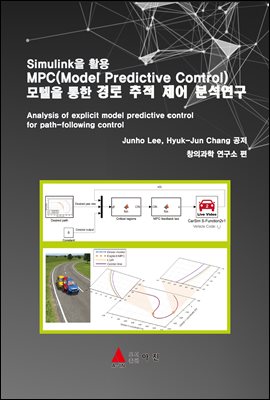
MPC(Model Predictive Control) 모텔을 통한 경로 추적 제어 분석연구
- 저자Junho Lee, Hyuk-Jun Chang 저
- 출판사아진
- 출판일2020-07-10
- 등록일2020-12-21
- SNS공유


- 파일포맷PDF
- 파일크기13MB
- 공급사YES24
-
지원기기
PC
PHONE
TABLET
프로그램 수동설치
전자책 프로그램 수동설치 안내
아이폰, 아이패드, 안드로이드폰, 태블릿,
보유 1, 대출 0,
예약 0, 누적대출 9, 누적예약 0
책소개
In this paper, explicit Model Predictive Control(MPC) is employed for automatedlane-keeping systems. MPC has been regarded as the key to handle such
constrained systems. However, the massive computational complexity of MPC,
which employs online optimization, has been a major drawback that limits the
range of its target application to relatively small and/or slow problems. Explicit
MPC can reduce this computational burden using a multiparametric quadratic
programming technique(mp-QP). The control objective is to derive an optimal front
steering wheel angle at each sampling time so that autonomous vehicles travel
along desired paths, including straight, circular, and clothoid parts, at high entry
speeds. In terms of the design of the proposed controller, a method of choosing
weighting matrices in an optimization problem and the range of horizons for
path-following control are described through simulations. For the verification of
the proposed controller, simulation results obtained using other control methods
such as MPC, Linear-Quadratic Regulator(LQR), and driver model are employed,
and CarSim, which reflects the features of a vehicle more realistically than
MATLAB/Simulink, is used for reliable demonstration.
목차
제 1편 : SIMULINK 기본편1.1 SIMULINK의 시작 1
블록의 연결 5
블록 파라미터의 설정 7
시뮬레이션 파라미터 (Configuration Parameters)의 설정 8
시뮬레이션의 수행 9
블록 파라미터의 표시 9
복수 데이터의 표시 11
2.2 동적 시뮬레이션 13
이차 미분방정식 17
선형 상태변수 모델 23
DC 모터의 시뮬레이션 24
함수 블록의 사용 29
차분방정식(difference equation)의 모델링 34
Subsystem(부시스템)의 구성 37
제 2편 : 연구논문
Analysis of explicit model predictive control for path-following control
1. Introduction 41
2. Vehicle model 44
3. Explicit model predictive control 45
4. Controller design 49
5. Explicit MPC controller design 50
6. Results 53
7. Conclusions 56
8. References 58

















